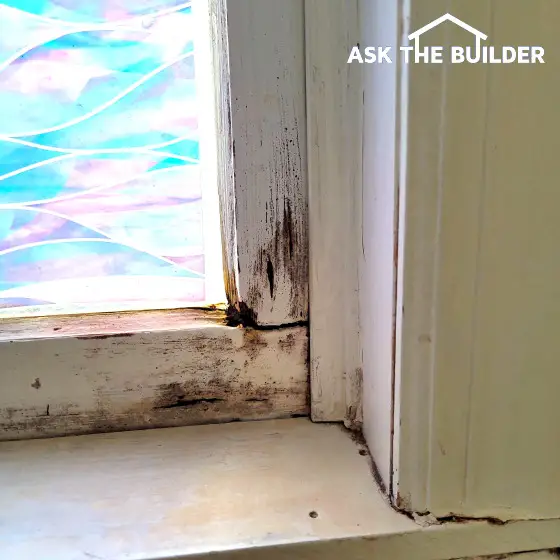DIY Wood Window Restoration

Window Restoration - This window has seen better days, but it’s not yet ready for the landfill. You can fix it with minimal skills. Copyright 2022 Tim Carter
Window Restoration
A fellow amateur radio operator sent me a photo of a wood window that’s in his girlfriend’s bathroom. The window is suffering from some rot and the sash frame is starting to separate.
While I don’t have the epic enhanced observation powers exhibited by the Shawn Spencer character in the popular and funny TV series Psych that is now in reruns, I was able to determine looking closely at the photo what caused the issue. That photo is shown at the top of this column.
Jeff’s significant other’s problem should put your head on a swivel because of the raging inflation that’s gripping our nation. A year ago, I broke the glass in one of my own up-down sash wood windows while cleaning it. I discovered it’s cheaper to buy a new sash from Andersen Windows than to go to all the hassle of ordering a custom insulated glass pane, remove the broken glass, install the new glass, and then try to match the custom exterior color.
What Does a New Window Cost?
Much to my surprise, the simple small window sash I need costs in excess of $350.00. I decided to wait until the glass starts to fog up before I replace it. The odds are it’s now approaching $400 for the sash. Jeff’s girlfriend could have stopped the wood rot, as well as the mildew on the sash, by doing one simple thing each day.
When I looked closely at the photograph, I could see a depressed part of the sash profile in the lower right corner. Water vapor from hot showers no doubt condensed on the glass pane, it then rolled down the window, and finally found a tiny crack to enter the wood at the sash corner.
Does Glass Cause Wood to Separate?
The problem has been going on for some time is my educated guess as the weight of the glass pushing down on the lower horizontal sash frame caused the two pieces of wood to separate it the corner. As the crack got bigger, more water entered faster and deeper accelerating the rot.
Fortunately, I feel my radio buddy can salvage this sash with a small amount of effort. Although it might be nice to wait for warmer weather, a repair can be initiated in the winter if he has the skills to cut a piece of plywood the same size as the sash so he can pull out the damaged sash to work on it. In warm weather, I’d just use a piece of thick cardboard to close up the opening while I’m repairing the sash.
How Do You Restore a Wood Window?
The first thing that needs to be done in my opinion is to clean the mildew off the sash and try to use a fan to dry the wood at the corner. Once the wood is fairly dry, I’d use a long squeeze clamp to see if a moderate amount of pressure will close up the gap between the two pieces of wood that make up the corner.
Get FREE BIDS from local handymen that can restore your wood windows.
Just in case you’re able to draw the corner tight with the clamp, I’d squirt some yellow carpenter’s glue in the crack and use a Popsicle stick or other thin piece of wood to spread it around in the crack. I’d then start to tighten the clamp hoping the corner draws up tight. If it does, I’d leave the clamp in place for a few hours.
It’s important to realize I’d place the bottom pad of the clamp about 1 inch from the outside corner of the sash. I’d want to be able to drill a pilot hole in the bottom of the sash about 1/2-inch from the outside corner so I could install a 3-inch-long stainless-steel wood screw up through the horizontal sash frame member into the vertical frame member while the clamp is in place. Carefully drill the pilot hole so the screw stays centered in the wood frame.
If you can’t draw the corner tight with the clamp, the crack can be filled with wood epoxy. I’ve got two videos on my AsktheBuilder.com website that show how to mix, apply and sand this wonderful material.
How Do You Avoid Wood Rot in Bathrooms?
This rot problem could have been avoided. All the woman had to do was place an old towel in contact with the bottom of the window glass each time she showered. The towel would capture the dripping condensate before it could get to the wood.
After getting dressed, she should then use the towel to wipe off the glass pane to ensure it’s dry. Any other visible liquid water on the window should also be dried off with the towel.
The towel should then be hung up to dry. The door to the bathroom should be left open to lower the overall humidity in that room as rapidly as possible. The reason bathrooms like hers have plentiful mildew growth is simple. There’s a great chance that condensate fog is forming on all the walls and surfaces as you see on the mirror.
The mirror in the bathroom is probably the same temperature as the walls and ceiling. Condensate fog forms on all the surfaces that are the same temperature, or cooler, than the mirror. You can’t see the fog because the walls and ceiling are opaque, but trust me, it’s there. This condensate is the water mildew needs to grow and thrive.
Column 1438